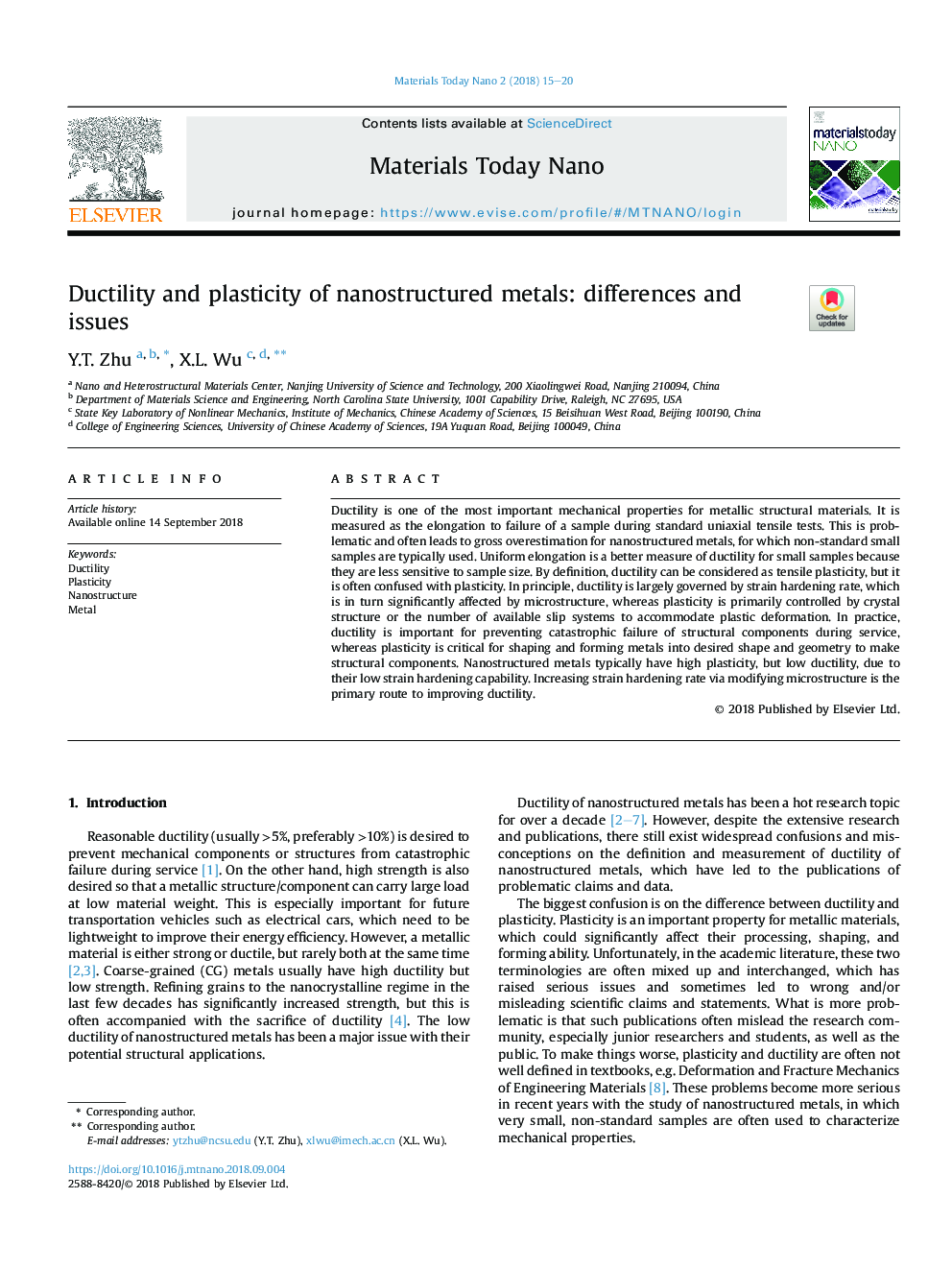| Article ID | Journal | Published Year | Pages | File Type |
|---|---|---|---|---|
| 10999761 | Materials Today Nano | 2018 | 6 Pages |
Abstract
Ductility is one of the most important mechanical properties for metallic structural materials. It is measured as the elongation to failure of a sample during standard uniaxial tensile tests. This is problematic and often leads to gross overestimation for nanostructured metals, for which non-standard small samples are typically used. Uniform elongation is a better measure of ductility for small samples because they are less sensitive to sample size. By definition, ductility can be considered as tensile plasticity, but it is often confused with plasticity. In principle, ductility is largely governed by strain hardening rate, which is in turn significantly affected by microstructure, whereas plasticity is primarily controlled by crystal structure or the number of available slip systems to accommodate plastic deformation. In practice, ductility is important for preventing catastrophic failure of structural components during service, whereas plasticity is critical for shaping and forming metals into desired shape and geometry to make structural components. Nanostructured metals typically have high plasticity, but low ductility, due to their low strain hardening capability. Increasing strain hardening rate via modifying microstructure is the primary route to improving ductility.
Related Topics
Physical Sciences and Engineering
Chemistry
Chemistry (General)
Authors
Y.T. Zhu, X.L. Wu,
